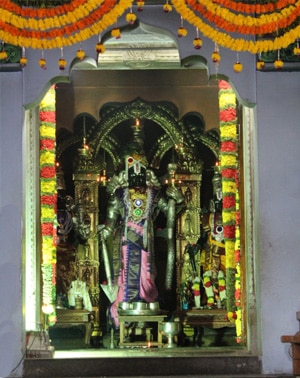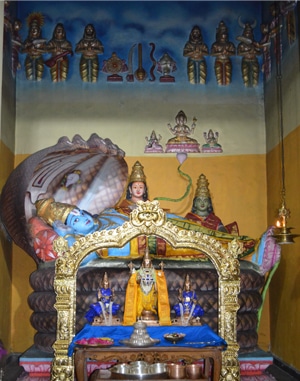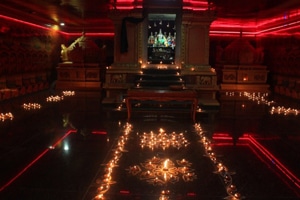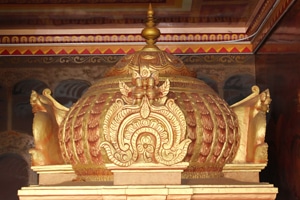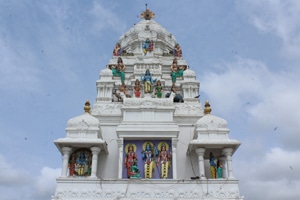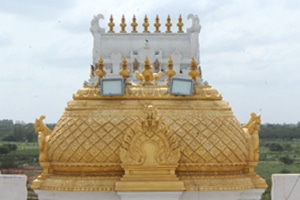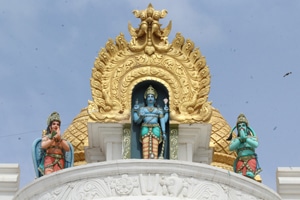“Sambhava:mi yuge yuge” – I shall incarnate in this world in every Yuga (millennium)
-Lord Krishna
Divya Saketham is one such manifestation of the statement made by Lord Krishna. Technically speaking Divya Saketham is a temple, but if we have a look at the history of its making one would be able to understand the essence as to why this ordinary looking “temple” got the name “Divya Saketham”.
To begin with, Divya Saketham has three floors, where three different avatar of lord vishnu reside in the form of deities. The first floor of Divya Saketham has the main deity in the form of Lord Rama (Kondandaramaswamy), who beautifully dwells along with His retinue –Vishwakse:na, A:lwa:rs, Acharyas and others. The very sight of the deity reminds one of the grace, love and affection which Lord Rama had in his heart, for his parents, and in turn filling our hearts with those same virtues.
If one goes to the second floor, one would get to witness the whole of universe in one sight. This floor has the original form of the Lord, lord Ranganatha along with his consorts Lakshmi and Goda. Lord Brahma is also depicted here, praying to lord Ranganatha here, and it is through His prayers here, the lord protects the living entities of the world. The divine-body of Lord Sri Ranganatha is color, constituted with sa:lagra:ma:s that have been acquired in worship from all the Divyadesams. Worshipping Lord Ranganatha, in Divya Saketham, is equivalent to worshipping the God in all Divyadesams.
In the third and the last floor, the almighty dwells in the form of Lord Vaikunthanatha, who came down on earth as Vyu:ha, who in turn happens to be the incarnation of Lord Ranganatha. This avatar of the Lord carries out the task of creation, sustenance, and destruction. From this Vyu:ha Lord Ranganatha, the Lord further came down as human incarnation of Sri Sitha Ramachandra Prabhu who is the presiding, primary deity of Divyasa:ke:thamtemple. At the top of these altars, there is the sanctum-tower called Sri Vima:nam which has taken the shape of eight-structured-tower. The dazzling divine discus Sri Sudarshanam is installed on top of the primary tower. Beneath this there are eight other towers. Each of the eight towers is embellished / consecrated with one syllable from the Narayana Ashtakshari, Manthram and the presiding deities regularly accept our propitiations.
A similar type of eight-tower sanctum is found only in one other known asGoshtipuram in South India. This also happens to be the first Divyade:sam sung by the A:lwarsand also the place where the great Sri Ramanujacharya – the preceptor of Visishtadvaithaphilosophy and also a great social reformer, climbed the temple tower and proclaimed the essence of the Narayana Ashtakshari to all interested devotees irrespective of caste, creed and gender.
Circumambulating the pra:ka:ram or the sanctum-walls of Divyasaketam once, is equivalent to directly circumambulating all the 108 Divyadesams. There are 108 altars (each dedicated to the presiding deity of each Divyadesam) in the sanctum-enclosure. These altars have been consecrated by the sacred Tulasiplant procured from 106Divyadesams. And hence, circumambulating the pra:ka:ram is equivalent to directly worshipping all the 108 Divyadesams.
